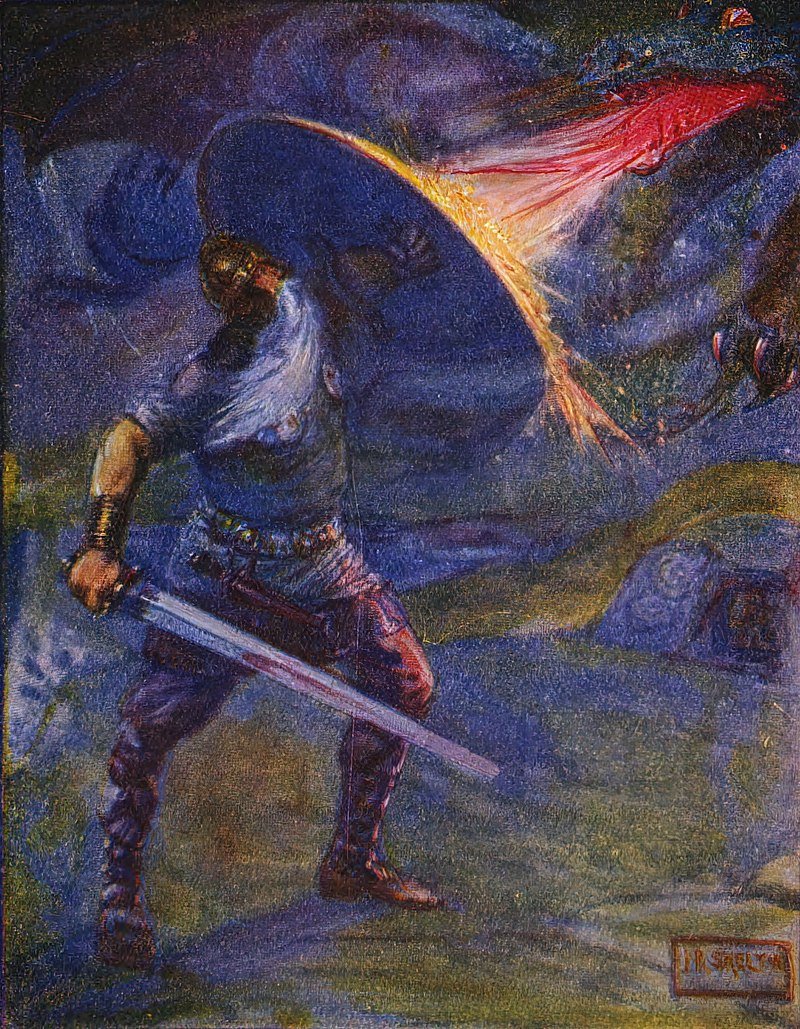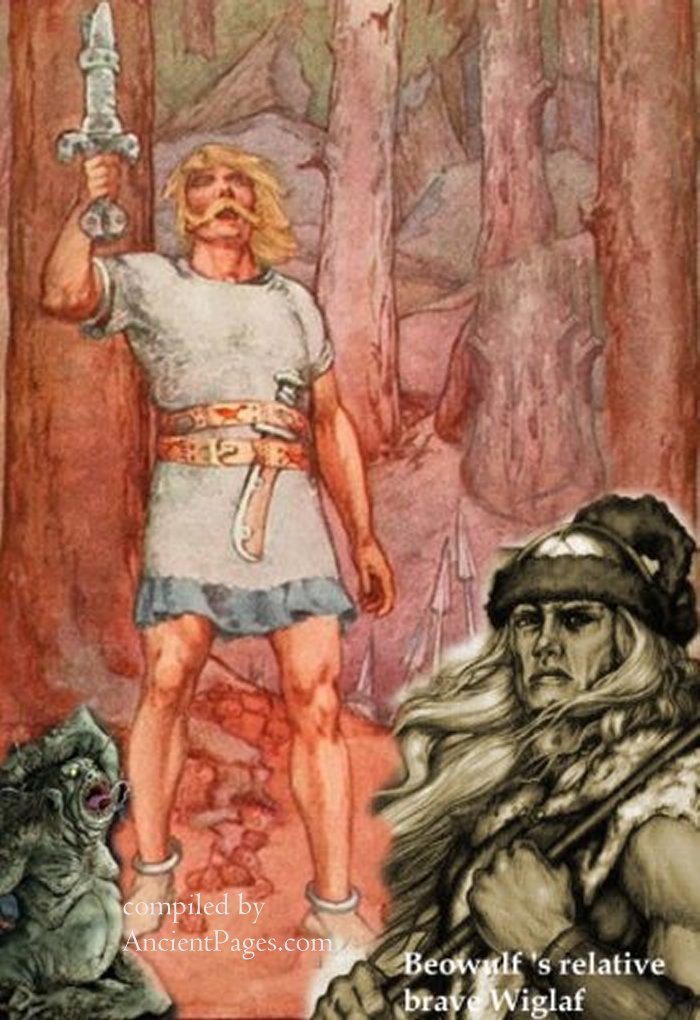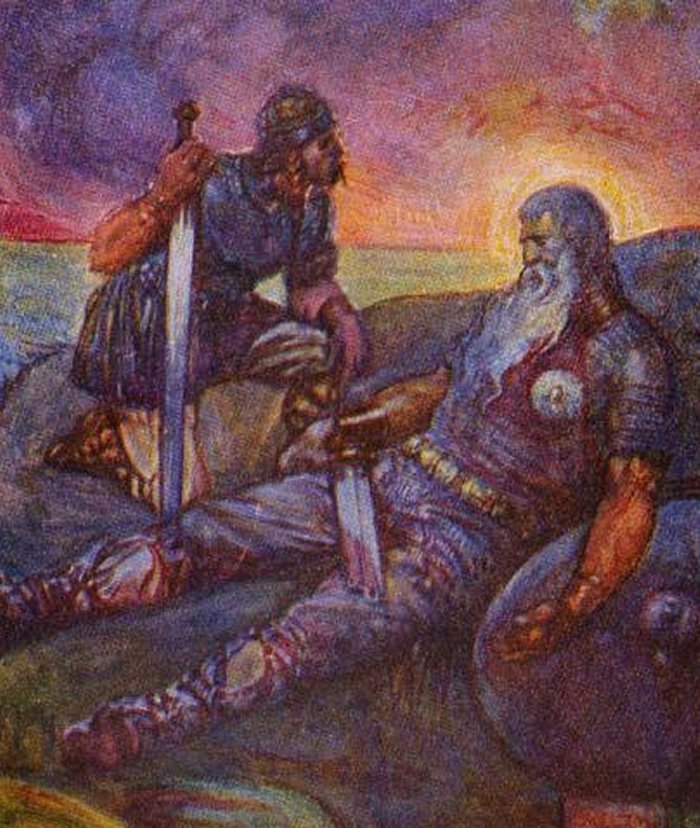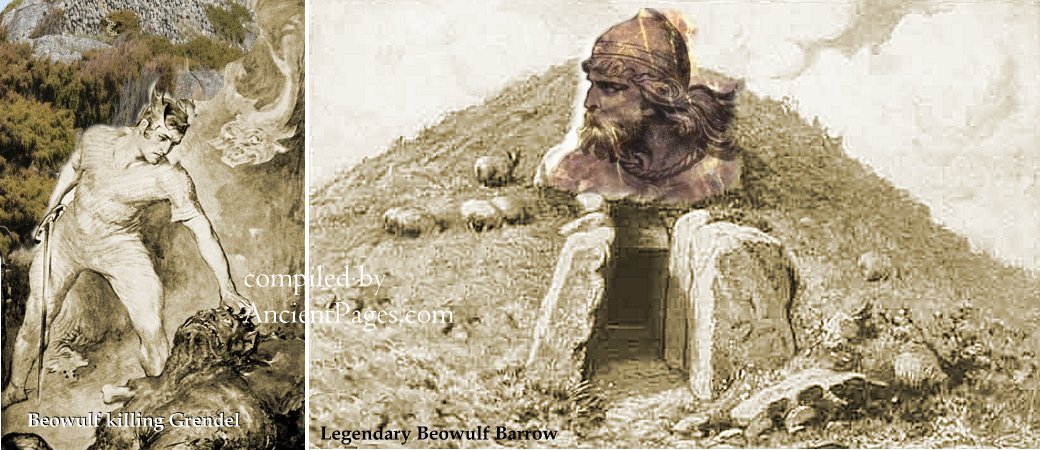A. Sutherland – AncientPages.com – His name Beowulf is among the greatest heroes of the English-speaking people, and his story has been known for generations. It is commonly cited as one of the most significant works of Old English literature.

J. R. Skelton – Illustration in the children’s book Stories of Beowulf (H. E. Marshall). – Public Domain
The hero and his battles are described in one of the most important works of Old English literature, ‘Beowulf.’
It is an Old English epic poem of 3182 lines, written by an anonymous English poet (or two scribes) between the 8th and the 11th century. Some have also suggested that it was written in the literary dialect of Anglo-Saxon England, so the most likely time of the poem’s creation is the eleventh century; during the reign of Cnut, the Danish King who had a primary place of residence in England
The poem originates from Central or North-East England, and despite its Christian background, the description of monsters killed by the hero Beowulf still gives an impression of a pre-Christian atmosphere.
In the poem, the aged Hrothgar, the legendary King of the Danes, lives in Heorot, a mead hall that serves him as a seat of rule. His great hall and his knights have been systematically attacked for twelve years by an evil monster, Grendel, who usually breaks into the King’s royal hall at night.

The monster – the descendant of Cain who represents evil and corruption – is a half-man and a half-fiend and is known as the man-eating creature. He lives at the bottom of the lake near the King’s hall. Helpless against the beast, Hrothgar and his people abandon Heorot.
Beowulf, a young and brave warrior from Geatland, hears of Hrothgar’s troubles and, with his King’s permission, leaves his homeland with a small group of warriors to offer his help to get rid of Grendel.
With thirty men’s strength, Beowulf fights Grendel unarmed and kills him by pulling off one of the monster’s arms.
Then, the hero fights and defeats his mother, who dwells at the bottom of a lake.
He first uses Hrunting, a magical sword but Grendel’s mother is immune to its power, so Beowulf kills her with a sword from her armory. Rewarded with gifts from the Danish King, Beowulf becomes King of the Geats, a North Germanic tribe inhabiting what is now Götaland (“land of the Geats”) in modern Sweden. He rules his country for fifty years.

Wiglaf is the single warrior to return and witness Beowulf’s death. Illustration by J. R. Skelton, 1908. Public Domain
However, a great terror fell upon his land in the fiftieth year of Beowulf’s reign.
A peasant carrying a golden object from a cave accidentally awakened the monster, which began to destroy everything in its path. Accompanied by his young relative, Wiglaf, the only one of his warriors brave enough to stand by his side, Beowulf decides to take up his sword and shield for the last time and defeat the Dragon.
Unfortunately, the aged King is injured and dies due to wounds received in the fight. After his death, he is ritually burned on a great pyre while his people wail and mourn him. Afterward, a barrow, visible from the sea, is built in his memory – The Beowulf Barrow.
The question still remains: what is its location? There are only a few possible locations for this barrow.
In this famous literary work, we find several traces of Norse beliefs that include the necklace that Beowulf received as a reward for killing Grendel from the wife of King Hrothgar – Walto. The artifact is comparable to the Brisingamen Necklace, Norse goddess Freya’s greatest treasure.

The hero then gave it to his uncle Higlak (Hygelak), King of the Geats, before he went against the Franks.
Does not the killing of the Dragon by King Beowulf remind us about Fafnir’s killing? As told in one of the mythical Scandinavian accounts, Sigurd (also Siegfried) kills Fafnir, the Dragon.
Another interesting ᴀssociation is that the helmets of Beowulf’s Warriors are decorated with the effigy of a boar, an animal dedicated to the god Frey (or Freyr, in Old Norse: ‘Lord’), a shining god, bringing fertility, prosperity, and a good harvest.
It is also worth mentioning that Beowulf refers to his armor as the work of Wayland, a name that many of us ᴀssociate with an Anglo-Saxon god-blacksmith and goldsmith.
There is no evidence of a historical Beowulf, but some characters, sites, and events described in the poem are historically verified. Also, the poem has never had a clearly defined тιтle, and the name “Beowulf” is unclear and still disputed.
However, it may symbolize the hero’s supernatural strength and courage.
Written by – A. Sutherland – AncientPages.com Senior Staff Writer
Copyright © AncientPages.com All rights reserved. This material may not be published, broadcast, rewritten or redistributed in whole or part without the express written permission of AncientPages.com





